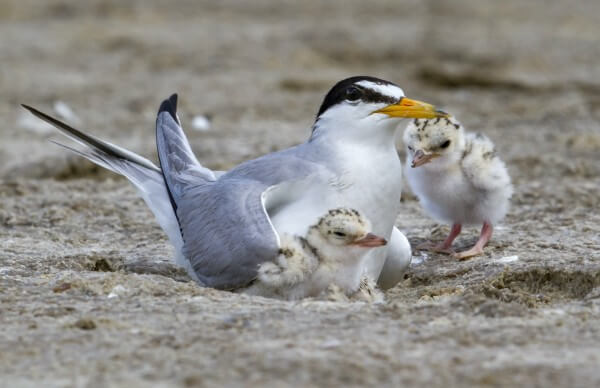Today more than 100 of our employees, their families, and colleagues from Sempra Energy volunteered to spruce up nesting areas around Mission Bay for the endangered California Least Tern, which arrives around mid-April each year to nest and rear their young.
This annual restoration event marks the 8th consecutive year that Team SDG&E/Sempra has partnered with the San Diego Audubon Society to help prepare habitat for the birds and their fledglings. SDG&E’s Environmental All-Stars program engages employees in volunteer efforts throughout the year. Also, we support many local environmental nonprofits’ initiatives through our Environmental Champions program, including the Audubon Society’s Outdoor Explore! youth environmental education program.
It’s the LEAST we can do to protect the beautiful environment we are privileged to live and work in.
Working Together to Protect an Endangered Species
Volunteers of all ages worked together to pull invasive weeds, pick up trash and prime the nesting spots at Mariner’s Point in Mission Bay for the birds’ return. Thanks to annual restoration efforts, the area is one of the most successful nesting colonies in our region. While their numbers have gradually rebounded, the Least Terns are still vulnerable, and recovery could reverse if their nesting sites aren’t managed and protected.
Making Progress
The California Least Tern is an endangered migratory shorebird that typically nests in coastal dunes from northern Baja California to San Francisco Bay in April. Invasive vegetation and predators, such as raccoons and larger birds, threaten Least Tern colonies. To successfully rear their young, the birds need sandy areas that are protected and cleared of debris and weeds. Volunteer efforts are mainly focused on their nesting habitat to make the most impact on the species’ survival.
Tern-friendly habitats are critical in our part of California because San Diego County supports 60 percent of this species’ breeding population. Each year, San Diego Audubon Society and its volunteers donate more than 2,000 hours. As a result, the number of birds’ nests and their fledglings, have gradually increased.
Learn More
To learn more about SDG&E’s environmental initiatives and partnerships with local organizations to advance environmental stewardship and climate education, visit sdge.com/environment.


